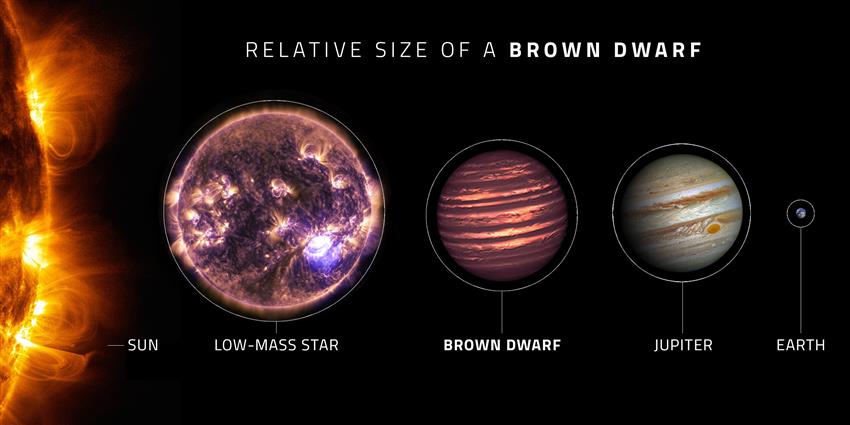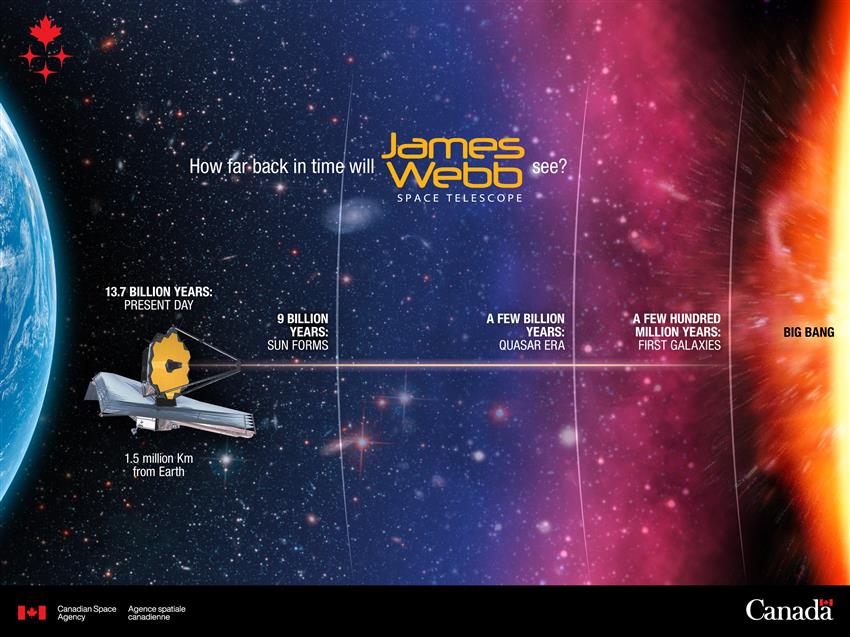What Webb can observe
The James Webb Space Telescope is the most powerful space telescope ever built, serving astronomers from all over the world. It is an international collaboration between NASA, the European Space Agency (ESA) and the Canadian Space Agency (CSA).
Webb's powerful look into the universe helps scientists discover alien worlds like exoplanets, learn more about the life cycles of stars, paint a fascinating picture of the early universe, and see galaxies as they evolve through time.
Alien worlds

The icy plumes of Enceladus, one of Saturn's moons, will be studied by the Webb Telescope to better understand the liquid ocean found underneath the moon's ice crust. (Credit: NASA/JPL)
Webb allows scientists to study planets, both within and beyond our solar system, in greater detail than ever before. It is designed to help determine the elements that make them up and unveil these worlds' potential to support life. The telescope may even detect signs of alien life known as biosignatures.
Webb's ability to observe the universe in the infrared allows astronomers to study solar systems as they are forming. These young dusty systems are called "protoplanetary disks." The dust inside them blocks visible light, and they can only be studied using instruments like those on Webb.
Spacecraft have already explored many celestial bodies in our solar system. Some of the most intriguing objects, especially in the search for life, are the moons of the planets Jupiter and Saturn.
Jupiter's moon Europa and Saturn's moon Enceladus are both fascinating ocean worlds. Their thick icy crusts hide a liquid ocean that is released as water vapour through ice volcanoes. Saturn's moon Titan has large surface lakes of methane.
Astronomers have also discovered thousands of exoplanets (planets orbiting stars other than our Sun) in the last few decades. These worlds vary greatly from large rocky "super-Earths" to gigantic "hot Jupiters."
Dr. David Lafrenière (Université de Montréal) is leading the NIRISS Exploration of the Atmospheric diversity of Transiting exoplanets (NEAT) program, which will study the atmospheres of exoplanets using the Canadian-built Webb instrument NIRISS.
The life cycle of a star
The Sun and other stars change drastically throughout their lifetimes, which can last billions of years. Learning more about their life cycles can help us better understand everything around us, even the elements that make up our bodies.
Throughout many stages of their lives, stars are shrouded in dense clouds of dust and gas that visible light cannot penetrate. Webb's infrared instruments can peer through those clouds and gas, shedding light on previously unseen stages of stars' life cycles.
As stars burn their fuel and eventually die in impressive explosions, they create, recycle and redistribute the raw building blocks of the universe. Depending on the mass of a star, its life can end in a few different ways.
A star like the Sun will puff up into a red giant star before blowing off its gassy envelope and leaving behind a lone jewel: a white dwarf star. Bigger stars, greater than about 10 times the mass of the Sun, explode in a spectacular supernova, leaving behind either a small, very dense core of neutrons called a neutron star or a black hole.
Webb is also the ideal telescope to study brown dwarfs and better understand their nature.

Relative size of a brown dwarf - Text version
A brown dwarf is a strange cosmic object that can be considered a "failed star": not massive enough to be a star, but more massive than a planet. (Credits: NASA/ESA/A. Simon, NASA GSFC, CSA)
Brown dwarfs are not easily classified as planets or stars, but have characteristics of both. They are not massive enough to sustain nuclear fusion in their cores, but are still hotter than planets and glow brightly in the infrared.
An international team led by Canadian astronomer Dr. Els Peeters from Western University will study the regions around very massive stars to better understand how those stars affect their environment.
The early universe
The very first moment of our universe, which scientists named the "Big Bang," is estimated to have taken place 13.8 billion years ago.
Like a cosmic time machine, Webb can peer back in time to observe the ancient light of the early universe, even earlier than the period explored by the Hubble Space Telescope. Its large mirror and sensitive instruments give scientists important clues to some of the great mysteries of this era.

What Webb will observe - Text version
Webb is designed to see back to when the first bright objects (stars and galaxies) were forming in the early universe. (Credits: STScI, CSA)
The light emitted from celestial objects takes time to travel through space. Light travels at a constant speed of 300,000 km per second. The light we observe here on Earth – from distant stars and galaxies – can actually be quite old, because of the time it has taken to reach us.
For example, light from our Sun takes eight minutes to travel to Earth, meaning that we see the Sun as it was eight minutes ago. We can say that the Sun is at a distance of eight "light-minutes" from Earth. Likewise, when we observe a galaxy that is 10 billion light-years away from us, we see it as it was 10 billion years ago.
Galaxies through time
In the early universe, galaxies were much more active. They collided together more frequently and formed stars at higher rates.
The first galaxies ever formed glowed very brightly in the ultraviolet and visible parts of light. Due to a phenomenon called "redshift," this light has shifted into the infrared and is not visible to the human eye by the time it reaches us. Webb's infrared instruments will be extremely valuable to study these early galaxies and increase our knowledge of their evolution.
Space telescopes help astronomers get a better understanding of how galaxies evolve through time.
Up until the early 1900s, our own galaxy, the Milky Way, was considered a lone-island universe. In , astronomer Edwin Hubble proved that the Great Andromeda Nebula was located outside the Milky Way and was actually a galaxy in its own right, unveiling the vastness of our universe with its countless galaxies.
Much later, the Hubble Space Telescope observed galaxies in "deep fields" of our universe, looking back 500 million years after the Big Bang. Using these images, astronomers were able to determine that galaxies have changed considerably over the course of the universe's history.
Webb will explore even further and deepen our understanding of how earlier galaxies evolved through time.

The Hubble Ultra Deep Field image displays 10,000 of the most distant galaxies ever observed by an optical telescope. (Credits: NASA/ESA/H. Teplitz and M. Rafelski (IPAC/Caltech), A. Koekemoer and Z. Levay (STScI), R. Windhorst (ASU))
Webb's instruments are designed to break down galaxies' light to study the elements and processes that fuelled their formation and activity. Thanks to data gathered by Webb, scientists are investigating some of the most puzzling parts of galaxies such as central supermassive black holes and the mysterious dark matter that seems to permeate space without emitting any light.
A Canadian team, led by Dr. Chris Willott from the National Research Council Canada's Herzberg Astronomy and Astrophysics Research Centre, is responsible for the CAnadian NIRISS Unbiased Cluster Survey (CANUCS) program, aiming to study some very early galaxies and galaxy clusters using the Canadian-built Webb instrument NIRISS.
